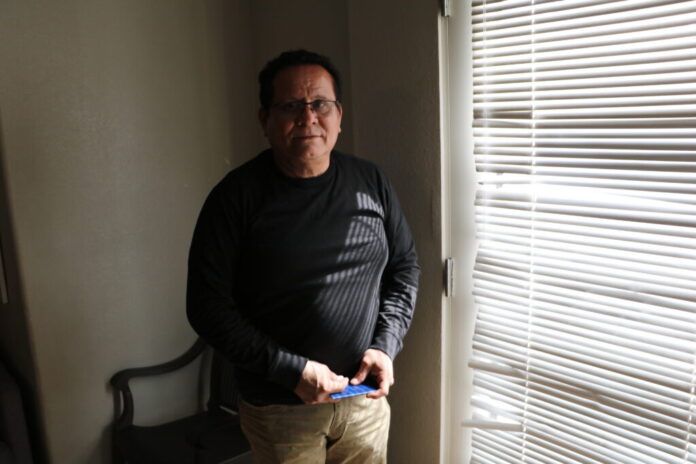“Unlocking Health Sector Progress in the MENA Region: World Health Organization’s Webinar Sets the Stage for Country-Driven Solutions
In the Middle East and North Africa (MENA) region, where healthcare challenges persist and health outcomes vary greatly between countries, a collaborative approach is crucial to driving progress and improving the lives of millions. The World Health Organization (WHO) has been at the forefront of this effort, working closely with countries to support their unique health sector needs and priorities. Recently, WHO hosted a webinar that brought together experts, policymakers, and stakeholders from the African Region (AFRO) and the Eastern Mediterranean Region (EMRO) to discuss a critical aspect of their country-driven programming: support for the health sector.
Implications for Country-Level Programming and Implementation
As the World Health Organization (WHO) continues to support country-driven programming for the health sector in the AFRO and EMRO regions, it is essential to understand the implications of this support on country-level programming and implementation. This webinar will explore the importance of developing a Health National Adaptation Plan (HNAP) and the quality criteria for ensuring effective planning and implementation.
Developing a Health National Adaptation Plan
A Health National Adaptation Plan (HNAP) is a critical tool for countries to address the health impacts of climate change. It provides a framework for identifying and prioritizing climate-sensitive health interventions, assessing vulnerabilities, and developing strategies for adaptation and resilience.
Introduction to Health National Adaptation Plans
A HNAP is a country-led process that brings together stakeholders from the health, environment, and other sectors to develop a comprehensive plan for addressing the health impacts of climate change. The plan is tailored to the country’s specific context, taking into account its unique vulnerabilities, capacities, and priorities.
Quality Criteria for HNAPs: Ensuring Effective Planning and Implementation
To ensure that HNAPs are effective, they must meet certain quality criteria. These include:
- Country ownership and leadership: The plan must be led and owned by the country, with active involvement of relevant stakeholders.
- Multi-sectoral approach: The plan must take a multi-sectoral approach, engaging stakeholders from the health, environment, and other relevant sectors.
- Participatory and inclusive process: The plan must be developed through a participatory and inclusive process, involving all relevant stakeholders, including vulnerable populations.
- Evidence-based and data-driven: The plan must be based on the best available evidence and data, including climate projections, health data, and socioeconomic analysis.
Case Studies: Successful HNAPs in AFRO and EMRO Regions
The WHO has supported the development of HNAPs in several countries in the AFRO and EMRO regions. These case studies demonstrate the effectiveness of HNAPs in addressing the health impacts of climate change.
WHO Support for Country-Driven Programming
The WHO provides support to countries in the AFRO and EMRO regions to develop and implement country-driven programming for the health sector. This support includes technical assistance, capacity building, and access to climate finance.
Overview of WHO Support for GCF Country-Driven Programming for the Health Sector
The WHO’s support for country-driven programming is based on its mandate to provide technical assistance and capacity building to countries. The WHO works closely with countries to identify their needs and priorities, and provides support to develop and implement country-driven programming.
AFRO and EMRO Regions: Country-Specific Challenges and Opportunities
The AFRO and EMRO regions face unique challenges and opportunities in addressing the health impacts of climate change. The WHO’s support is tailored to the specific needs and priorities of each country, taking into account their unique vulnerabilities, capacities, and priorities.
Practical Aspects of Accessing WHO Support for Country-Driven Programming
Countries can access WHO support for country-driven programming through various mechanisms, including:
- Technical assistance: The WHO provides technical assistance to countries to develop and implement country-driven programming.
- Capacity building: The WHO provides capacity building support to countries to enhance their ability to address the health impacts of climate change.
- Access to climate finance: The WHO provides support to countries to access climate finance, including the Green Climate Fund (GCF), to implement country-driven programming.
Climate Resilient and Environmentally Sustainable Health Care Facilities
Climate resilient and environmentally sustainable health care facilities are critical for ensuring the continuity of health services in the face of climate change. This webinar will explore the importance of designing and implementing sustainable health care facilities, and the role of the WHO in supporting countries to achieve this goal.
Importance of Climate Resilient and Environmentally Sustainable Health Care Facilities
Health care facilities are critical infrastructure for ensuring the delivery of health services. However, they are often vulnerable to climate-related disasters, such as floods, storms, and heatwaves. Climate resilient and environmentally sustainable health care facilities are essential for ensuring the continuity of health services and protecting the health of vulnerable populations.
Designing and Implementing Sustainable Health Care Facilities
The design and implementation of sustainable health care facilities require a holistic approach, taking into account the environmental, social, and economic impacts of the facility. This includes:
- Climate-resilient design: The facility must be designed to withstand climate-related disasters, such as floods, storms, and heatwaves.
- Energy efficiency and renewable energy: The facility must be designed to minimize energy consumption and use renewable energy sources.
- Water conservation and management: The facility must be designed to conserve and manage water resources effectively.
Case Studies: Successful Implementation of Sustainable Health Care Facilities in AFRO and EMRO Regions
The WHO has supported the implementation of sustainable health care facilities in several countries in the AFRO and EMRO regions. These case studies demonstrate the effectiveness of sustainable health care facilities in addressing the health impacts of climate change.
Conclusion
Conclusion: Empowering Country-Driven Health Sector Programming in AFRO/EMRO Regions
In our recent article, we delved into the World Health Organization’s (WHO) support for country-driven programming in the health sector, particularly in the AFRO (African Region) and EMRO (Eastern Mediterranean Region) regions. The webinar, “WHO support for GCF country-driven programming for the health sector: AFRO/EMRO (MENA) Regions,” shed light on the importance of country-led initiatives in achieving universal health coverage (UHC) and addressing health-related Sustainable Development Goals (SDGs). The key takeaways from this discussion emphasized the need for tailored approaches, strengthened partnerships, and enhanced capacity-building to ensure effective implementation and sustainability of country-driven health sector programs.
The significance of this topic cannot be overstated, as the success of UHC and SDG achievement in these regions heavily relies on country-driven programming. The WHO’s support in this endeavor is crucial, as it enables countries to develop context-specific solutions, mobilize resources, and build capacity to address health challenges. The implications of this topic extend beyond the healthcare sector, influencing the overall economic, social, and human development of these regions. By empowering countries to lead their health sector programming, we can create a ripple effect of positive change, ultimately contributing to a healthier, more resilient, and more prosperous world.
As we move forward, it is essential to continue fostering a collaborative environment between countries, international partners, and the WHO to support country-driven programming in the health sector. By doing so, we can harness the collective energy and expertise to drive meaningful change and achieve the ambitious goals set forth in the UHC and SDGs. As we conclude this article, we are reminded that the journey towards a healthier world is not just a global imperative but a collective responsibility. It is our collective duty to support and empower countries to lead their own health sector programming, paving the way for a brighter, healthier future for generations to come.






